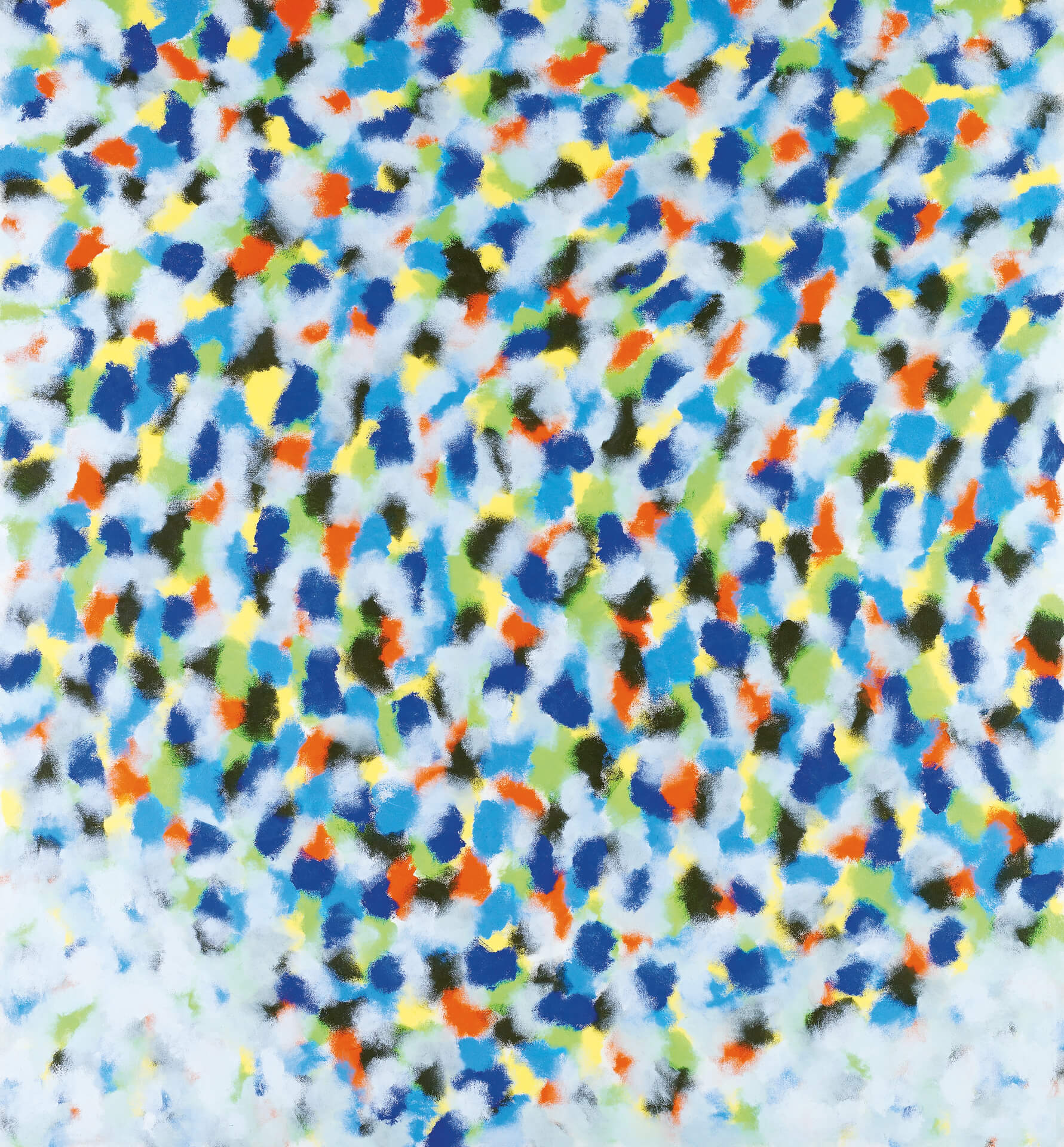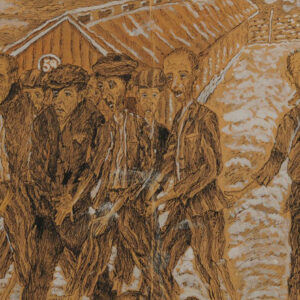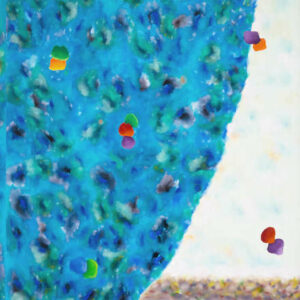Little Orange Painting II 1974

Gershon Iskowitz, Little Orange Painting II, 1974
Oil on canvas, 177.8 x 165.1 cm
Art Gallery of Ontario, Toronto
Little Orange Painting II is a signature work from Gershon Iskowitz’s mature painting of the mid-1970s, when, following the Uplands diptychs, he frequently returned to single-panel images. Here, Iskowitz further develops the massed ovoids from the 1967 Landscape suite and the dynamic shapes from the Uplands series but expresses them with a new focus, as if zooming in on a small area of an Uplands painting.

Gershon Iskowitz, Seasons, 1974, oil on canvas, 178 x 610 cm, Art Museum at the University of Toronto.
At the same time, Iskowitz explored ways to “uncover” the space between the clustered, polychromatic patches. From a distance, the strong blues, greens, and purples come forward and “float” on a grey background. Yet, on closer examination, the greys are painted on top of the coloured areas. Iskowitz has reversed the convention of atmospheric perspective, where we perceive dark colours in the foreground and light colours retreating in the distance. Little Orange Painting II is one of the few paintings in which Iskowitz used black, but sparingly. As with the Lowlands and Uplands paintings, he suggests a sense of movement, across, up, and down the image plane, without a horizon line.
The 1970s was a decade of high creative productivity for Iskowitz, who now followed a disciplined routine and studio practice. Peter Mellen described his painting process as intuitive, applying one colour, then another, to achieve structural balance and harmony on his own terms. In Iskowitz’s words: “There’s no explanation. I don’t even know myself how the painting will come out.” Colour was a keystone of his art: he contemplated each carefully, always mixed his own, and frequently cited colour in his titles. As Toronto artist Daniel Solomon (b.1945) commented: “Iskowitz and Jack Bush are the only two people [in Toronto] who thought specifically about carefully constructed colour relationships and how paint sits on the surface of a canvas.”

 About the Author
About the Author
 More Online Art Books
More Online Art Books
 Acknowledgements
Acknowledgements